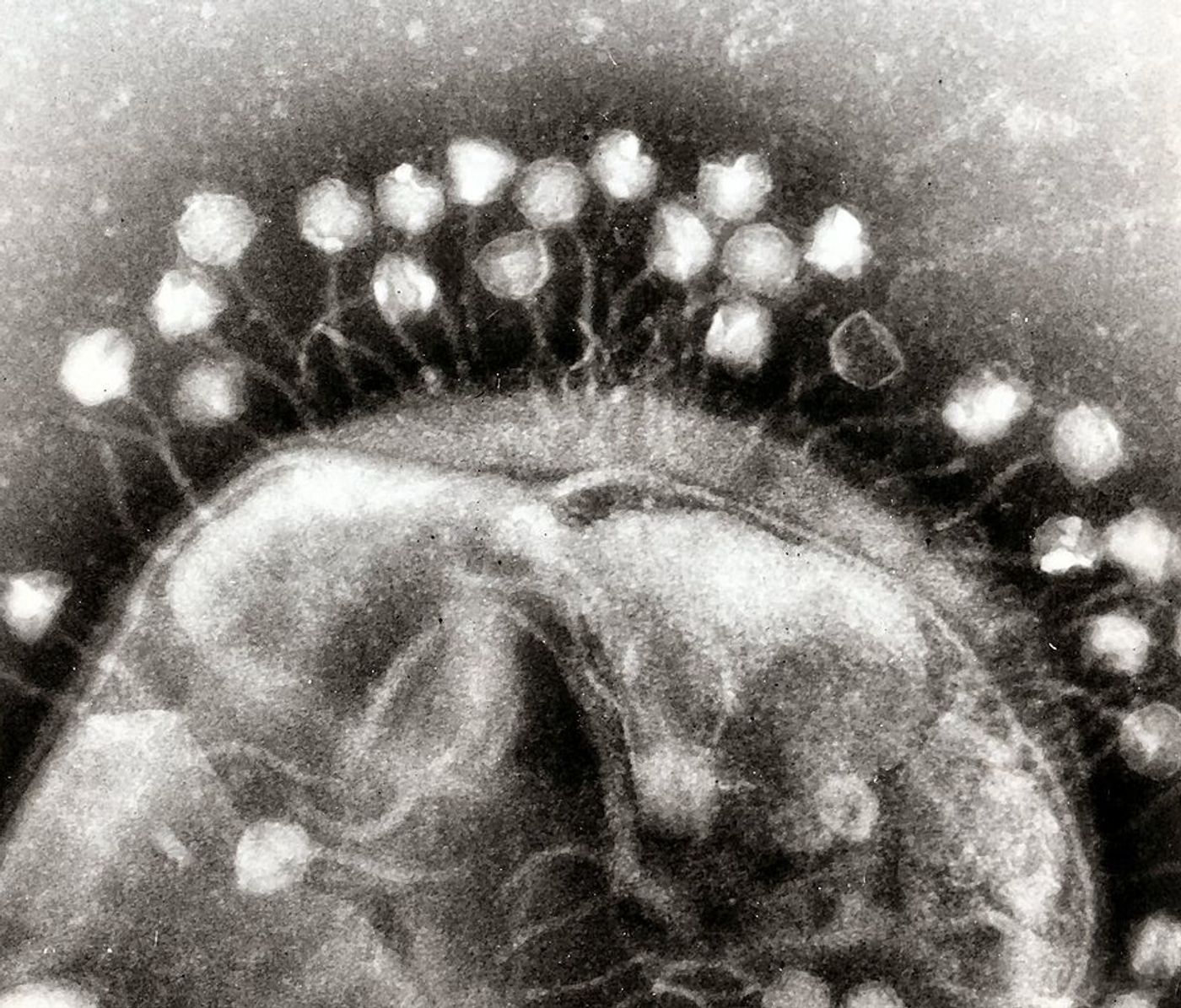Researchers Observe Viruses Hijacking Bacterial Cells
Viruses invade cells and hijack the internal machinery to use it for their own gain. Scientists at the University of California San Diego (UCSD) have learned more about how viruses accomplish that mission; they reprogram cellular function, which subsequently makes hundreds of new viral particles and when the cell explodes, those particles can infect other cells. The cellular reprogramming alters bacterial machinery and makes it function in a way that is similar to an animal or human cell type. Reporting in Science, the researchers have revealed details about what is occurring inside of those hijacked bacterial cells during the replication of viral particles.
"Scientists have been studying viruses for a hundred years, but we've never seen anything like this before," said the research team leader Joe Pogliano, a Professor of Molecular Biology at UCSD. "Every experiment produced something new and exciting about this system."
Bacteriophages, The object of the research, are viruses that infect bacterial cells; they are among the most numerous entities on earth. "We chose to study a family of unusually large bacteriophage and to apply cutting edge methods to watch their replication in unprecedented detail," explained Kit Pogliano, a UCSD Professor of Molecular Biology who participated in the study.
The researchers learned that after infection with bacteriophages, most of the existing parts of bacterial cells are destroyed, including the DNA. The cell is then rearranged into a virus factory. "This factory and the surrounding arrangement of the infected cell are remarkably similar to the organization seen in plant and animal cells," said Pogliano.
Bacterial cells are different from animal cells in several ways; animal or eukaryotic cells have specialized compartments such as a nucleus, which bacteria lack. Vorrapon Chaikeeratisak, first author of the paper and a postdoctoral fellow, and Katrina Nguyen, a graduate student in Pogliano's laboratory, determined that viruses mimic those features of eukaryotic cells in the bacteria they take over.
Fluorescence microscopy revealed that during viral replication within bacteria, compartments are created that separate the various mechanisms of the manufacture. "These compartments enclose all the viral DNA, just as a nucleus does in a plant or mammalian cell," said Chaikeeratisak. "DNA processes, like replication or transcription, occur inside the compartment while proteins are produced outside the compartment."
Research collaborators Elizabeth Villa, a Professor of Chemistry and Biochemistry at USD, and David Agard, a Professor of Biochemistry and Biophysics at UC San Francisco utilized a technique called cryo-electron tomography to create images of what was happening in the bacterial cells.
The assembly of viral particles could then be observed around a compartment in the bacterium resembling a nucleus, which you can see in the video above. The new viruses eventually caused cells to burst open; the particles subsequently disseminated, infecting nearby cells.
"These observations of viral manipulation of a cell are completely unexpected, as no bacterial virus has been seen to reorganize a cell in so drastic a manner," said Pogliano. "The restructuring of a simple cell to resemble an existing, more complicated system blurs the line between simple bacterial cells and those of 'higher' organisms, such as plants and animals."
It has been theorized that multicellular organisms may have evolved in this manner. The theory of "viral eukaryogenesis," suggests eukaryotic cells were first created when a large virus invaded a bacterium. The theory suggests that the two cells fused to create a new kind of cell in which the virus became the nucleus.
"It may be too early to know if this particular virus is an intermediate step in the transition from bacteria and viruses to multicellular eukaryotes, but this discovery could broaden knowledge about the origins of life as we know it," concluded Pogliano.
The video above from the Khan Academy explains more about viruses.
Sources: AAAS/Eurekalert! via UCSD, Science









